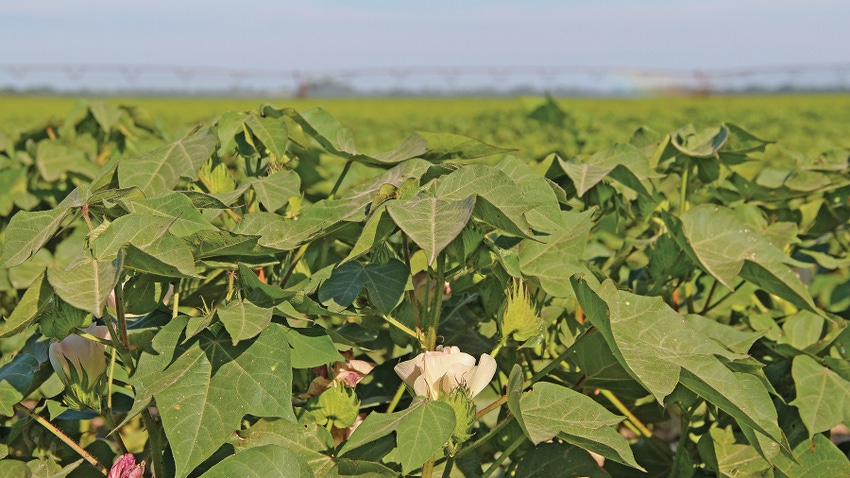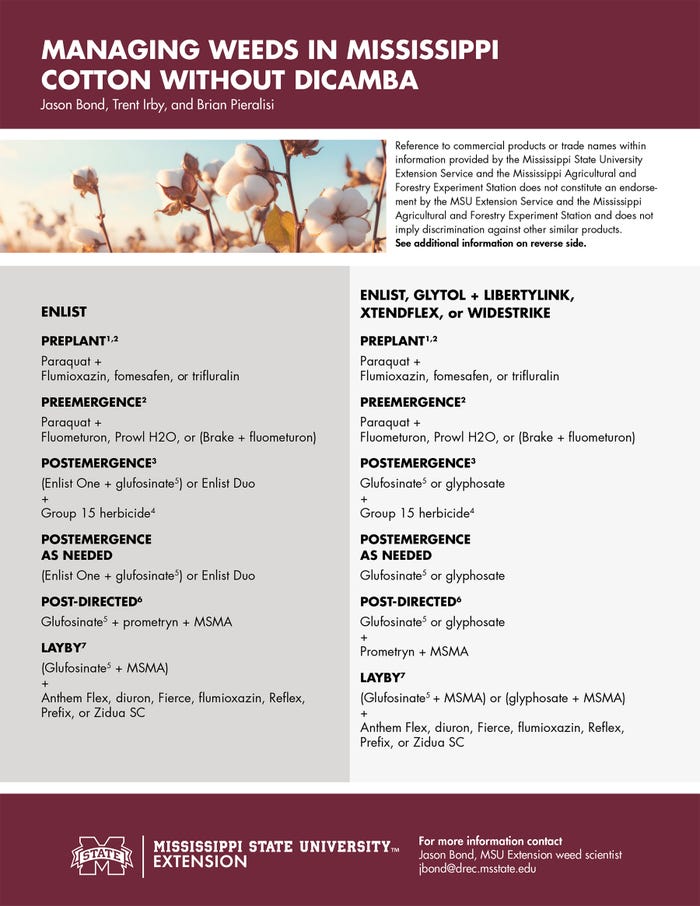
Faced with the potential of a dicamba-free growing season, farmers across the country reevaluated their dependence on a long-time, highly effective herbicide tool. No class of farmers was more wary than cotton growers, whose yield relies on more intensive management with fewer effective herbicide options than any other dicamba-friendly crop.
In the heart of Mid-South cotton country, researchers at Mississippi State University compiled years of in-field trial data to create two equally effective non-dicamba options for producers considering a program change, in 2024 or in the future.
“We have relied on that specific dicamba chemistry, that technology since it was commercialized but there's always exceptions,” said lead researcher and MSU Extension specialist Jason Bond. “There are some occasions where the grower doesn’t need a post treatment at all, so they haven't used dicamba even though they've planted the variety that has that technology option.”
Palmer amaranth resistant to one or multiple herbicide mode of actions has contributed to this reliance on dicamba for cotton growers. Dicamba can often kill Palmer amaranth more effectively and over a wider variety of growth stages than some other herbicide options, which rely more heavily on treatment at the ride weed growth stage and field condition.
Second only to herbicide variety selection, Bond said timing is the most critical factor in an effective weed management program.
“Timing is one of the most important considerations on herbicide performance, particularly when you start targeting a weed like Palmer amaranth which is what drives most of our decisions in the Mississippi Delta,” Bond said. “There are products that will control a one-to-three-inch Palmer amaranth that will not control a four-to-five-inch Palmer amaranth.”
Taking into account weed size, cotton plant size, timing and field conditions are all critically important considerations when applying either of MSU’s recommended options. A factsheet released this month lists the strategies and considerations alongside each recommended application, all based on decades of research.
“For our system residual herbicides are the base,” Bond said. “We promote multiple modes of action in a residual herbicide. Control is easier in our other row crops than it is in cotton because of the number of herbicide choices available.”
Start with preplant, preemergence
Regardless of which cotton weed management pathway a grower picks, Bond’s research recommends the same preplant and preemergence options: Paraquat plus flumioxazin, fomesafen or trifluralin for preplant applications and paraquat plus fluometuron, Prowl H2O or Brake plus fluometuron.
If employing this strategy, control from flumioxazin or fomesafen can be compromised if beds are disturbed prior to planting. It’s also important to note that preplant applications of flumioxazin in conventionally tilled cotton fields should be made 30 days prior to planting.
Where bed disruption is a hindrance to flumioxazin or fomesafen, it is a help to trifluralin, which needs mechanical incorporation within 24 hours of application for best results.
Fomesafen is best used with impending rainfall, as it requires at least 0.5 inches of rainfall for activation in preplant applications.
Controlling resistant weeds with residual herbicides is dependent on the use of the full labelled rate of the product and all residual herbicides in these applications require incorporation from rainfall or irrigation. Following the guidelines correctly and with sufficient rainfall, residuals can provide controls for two to three weeks.
Select postemergence pathway
Mississippi State’s trials recommend two possible postemergence pathways – one strictly Enlist-based protocol and one for the use of Enlist and glytol plus Libertylink, Xtendflex or Widestrike. All postemergence over-the-top applications should be applied when cotton is in the one to two leaf stage.
Following the Enlist protocol, postemergence application should be either Enlist One plus glufosinate or Enlist Duo, alongside the producers’ choice of a Group 15 herbicide. Additional postemergence applications of Enlist One plus glufosinate or Enlist Duo can be sprayed as needed. Post-directed applications in this system should consist of glufosinate plus prometryn and MSA.
In the Enlist+ protocol, postemergence application should be either glufosinate or glyphosate plus a Group 15 herbicide. Additional postemergence applications of glufosinate or glyphosate can be applied as needed. Post-directed applications in this system should consist of glufosinate or glyphosate plus prometryn and MSA. All post-directed applications should occur after plants reach six inches in height.
Glufosinate should be applied when weeds are two to three inches in height, with spray coverage of all plants critical to success. In glufosinate or glufosinate plus Group 15 applications, avoid nozzles that produce coarse droplets.
Lay down a layby
The final step in a non-Dicamba cotton protocol is a layby application. In the Enlist protocol, the recommended layby application is glufosinate plus MSMA and one choice of Anthem Flex, diuron, Fierce, flumioxazin, Reflex, Prefix or Zidua SC.
In the Enlist+ protocol, the recommended layby application is glufosinate or glyphosate plus MSMA and one choice of Anthem Flex, diuron, Fierce, flumioxazin, Reflex, Prefix or Zidua SC.

About the Author(s)
You May Also Like






